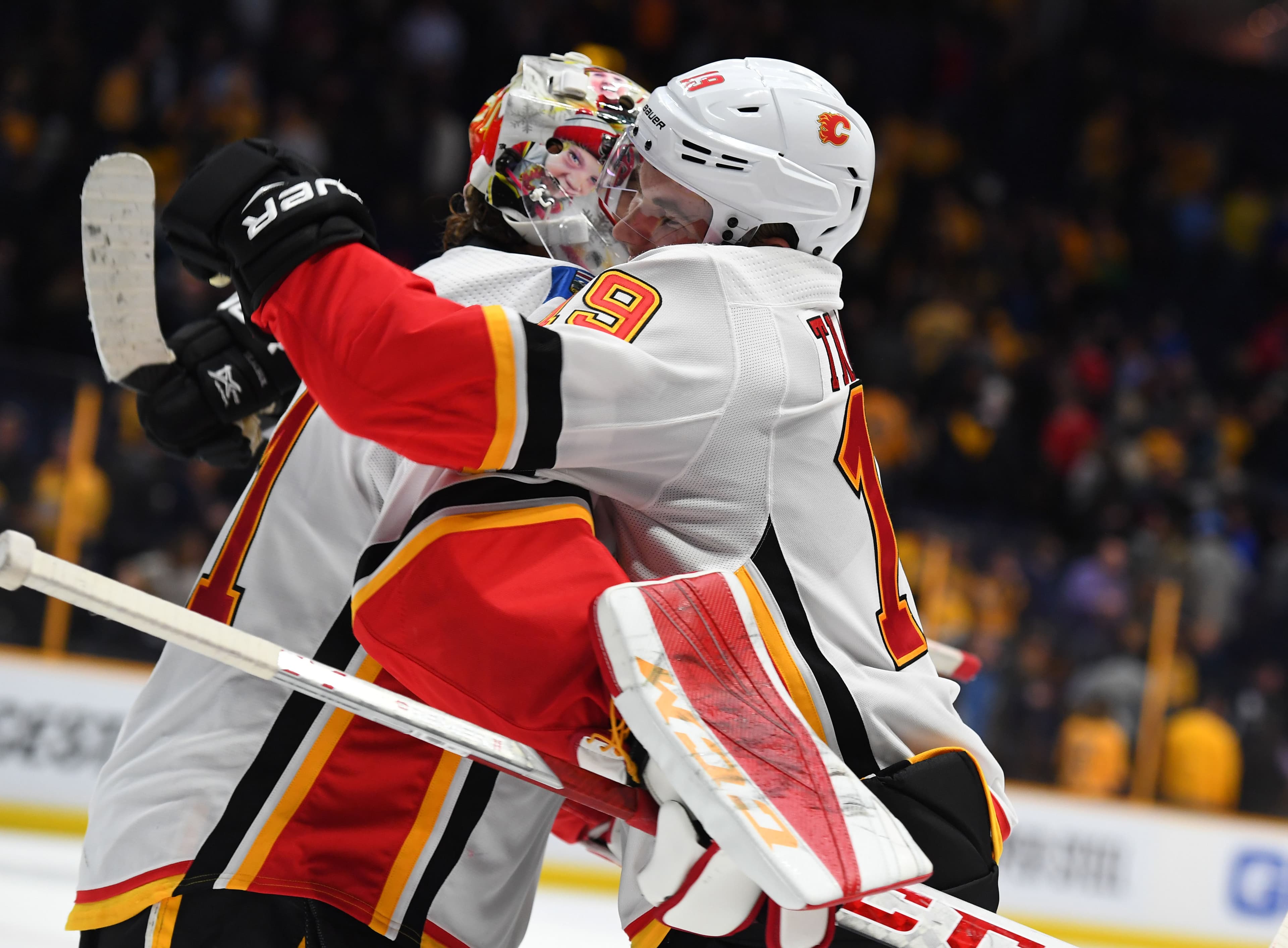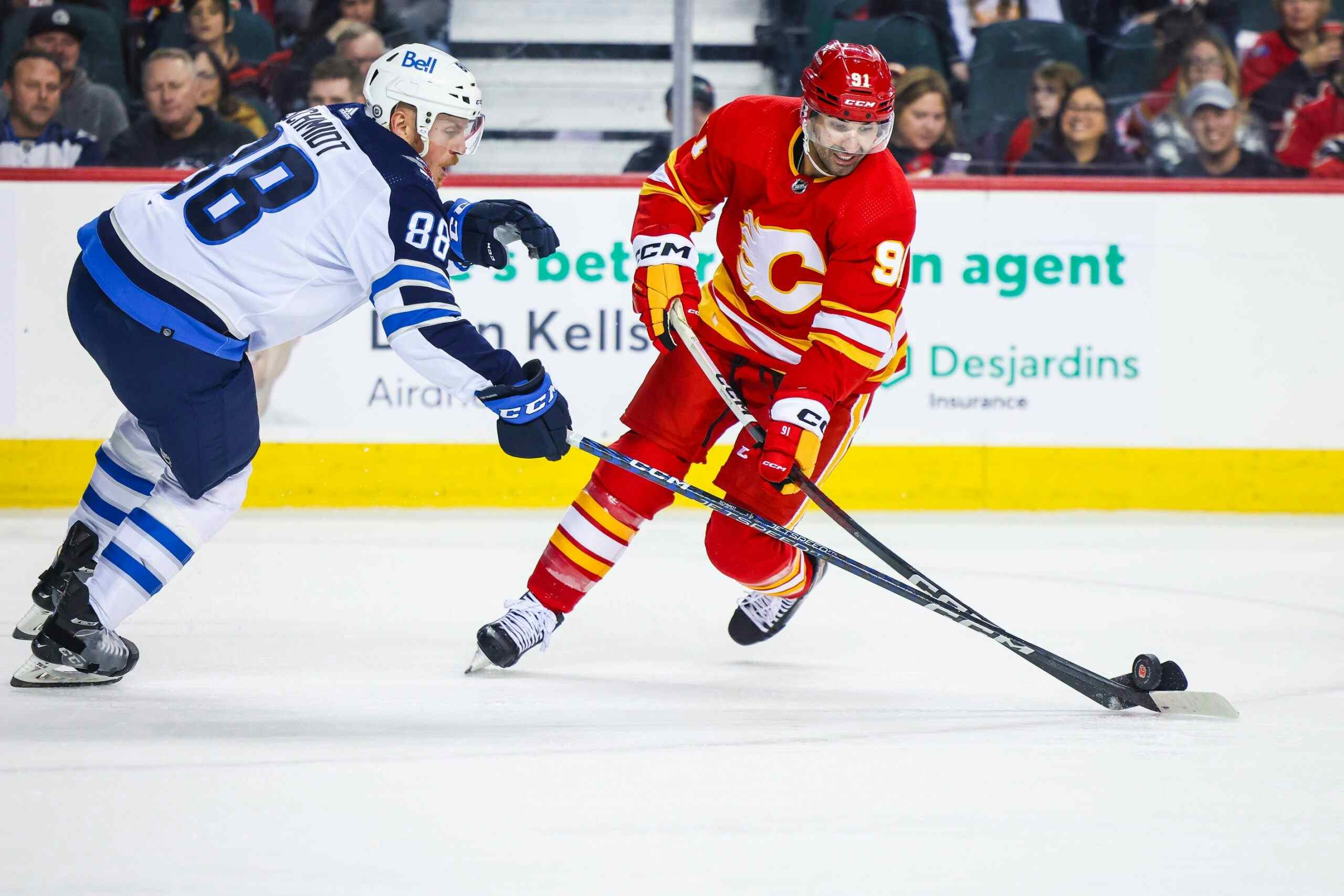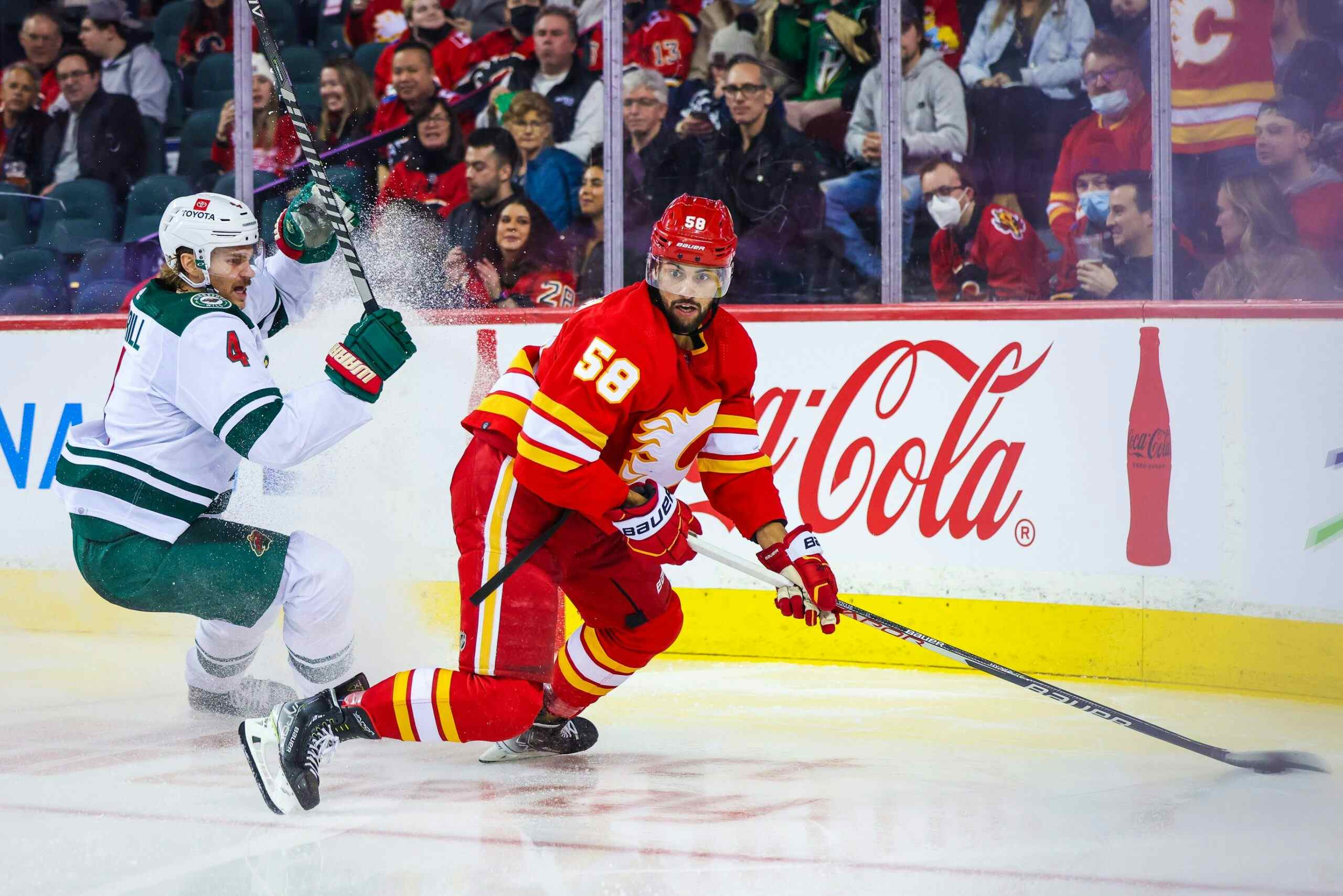Flames 3, Predators 2 (SO) post-game embers: That’s more like it

By Ari Yanover
6 years agoThe Flames won the even strength battle.
Special teams looked like they were going to do them in, though – at least until Matthew Tkachuk finally got them on the board. Once Pekka Rinne was solved, there was no looking back – as it should have been, and as it was.
Even strength dominance
Just how badly the Flames deserve this one? Throughout the game, they had an overall 58.89% 5v5 CF – 65.52% in the first period, 58.06% in the second, and 53.33% in the third. They were the better team over the course of the full 60 minutes. It’s not like they let their foot off the gas, either – not with a 100% high danger CF in the third period.
Had they lost this one, it would have been a pure special teams failure. Taking three penalties in the first – however iffy some of those calls may have been – and getting scored on twice, dropping their penalty kill to 82.9%, from top five in the NHL to tied for 11th? Not great. Getting four powerplay opportunities of their own – again, with perhaps some calls missed – only to not score on any of them? That’s a special teams failure.
The top powerplay unit got most of the time on the man advantage. T.J. Brodie played nearly six minutes, while Johnny Gaudreau, Sean Monahan, Kris Versteeg, and Troy Brouwer about 30 seconds fewer than him. (You have to think that once Jaromir Jagr is back Brouwer is off the powerplay, though.)
Good thing most of the game is played at even strength, then. This was a much improved effort: one they stuck with, and one that paid off for them.
Majority 50%+
For a fair portion of the game, there were pretty much no players under a 50% CF.
By its end, four were: the veteran line of Kris Versteeg, Matt Stajan, and Troy Brouwer (with team-low 25% offensive zone starts), and Michael Stone.
Interestingly enough, Stone finished with 40% ozs, while his partner, Brett Kulak, finished even at 50%, also with 25% ozs. Kulak played approximately four fewer minutes than his partner.
The real corsi star of the night, though? One Sam Bennett, who finished at the top with 72.73%, and was above 80% for the majority of the game. The numbers matched his play: while he still hasn’t yet scored a point this season, that was by far his best game, and he was unlucky to have not gotten one in himself (or playing with linemates who couldn’t quite match him in this one, i.e. Curtis Lazar fanning on a perfect pass he sent him). This doesn’t mean Bennett is the best winger ever – along with Micheal Ferland and Johnny Gaudreau, he had 80%+ ozs – but this is definitely a step in the right direction.
What happened here?
When one team is dominating corsi-wise, the opposing team is likely to have many players underwater.
There’s being underwater, though, and there’s clocking in at 0% CF (Cody McLeod) or 4.55% (F. Gaudreau. The F stands for “Fake”. Or, more correctly, Frederick).
The Flames could have dressed Tanner Glass to counter McLeod – or they could have gone with their 12 regular shift skaters and rendered McLeod completely useless in every possible avenue, leaving the Preds to play one of their forwards all of 5:21 as they were eventually worn down and surrendered their lead.
F. Gaudreau, though? He has decent numbers in the AHL, one regular season assist, three playoff goals – but to be on the ice for only a single corsi event for over 11:27 of 5v5 ice time is something else entirely.
McLeod and F. Gaudreau were mostly countered by Bennett’s line. They completely failed against them.
Jankowski watch
In the first NHL game of Mark Jankowski’s career, he played 10:18.
This time around, he played 11:38 – a little more than Matt Stajan, but behind Lazar and Bennett (though Bennett played less than that at even strength; he made up for his extra minutes mostly on the powerplay). He finished with a 59.26% CF – 16 CF, and 11 CA, five more events against than Bennett. He was pretty sheltered, with 75.00% ozs, but his line was full of energy and did try to get things going throughout the game, with it almost paying off a couple of times.
He’s not the saviour or anything, but it was a solid, if sheltered, outing. Which really should be about what was expected: after all, he was playing in pretty good enemy territory.
Tkachuk the hero
And then, there was Tkachuk: he who created a goal using purely his own strength, forcing that puck into the net, and then feeling it well enough to score the shootout winner. (Last season, only Versteeg and Monahan scored any shootout goals. Mostly Versteeg.)
Tkachuk finished with a 64.29% CF and 35.71% ozs while mostly facing off against the Predators’ top four, plus Ryan Johansen – not exactly easy competition, but exactly who one would expect him (and his dominant shutdown line) to face.
It is his second season, and he is proving his first to be no fluke. Tkachuk is abnormal in that he’s a young player who gets absolutely no sheltering and still walks the walk with his scoring, anyway. He’s now up to six points in nine games, tied with Dougie Hamilton for fourth on the team.
A top scorer who faces top opposition, draws penalties (and you could basically see him restraining himself after Matthias Ekholm punched Travis Hamonic in the face for some reason, so chalk that Carolina penalty up to a so far successful learning experience), and is incredibly strong on the puck. That’s not how one would usually describe a 19-year-old sophomore. And yet.
Recent articles from Ari Yanover





